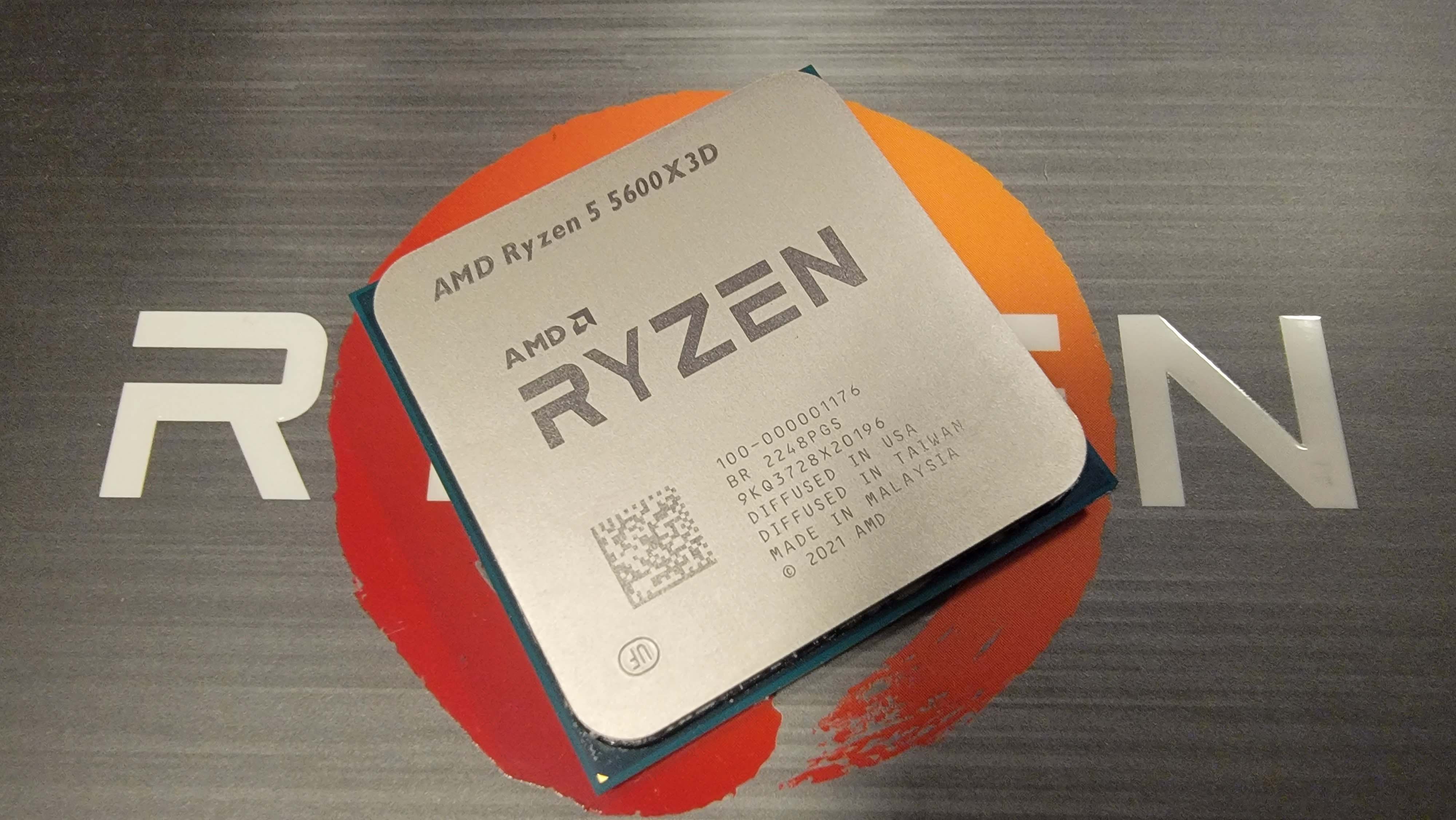Why you can trust Tom's Hardware
AMD Ryzen 5 5600X3D Productivity Benchmarks — The TLDR

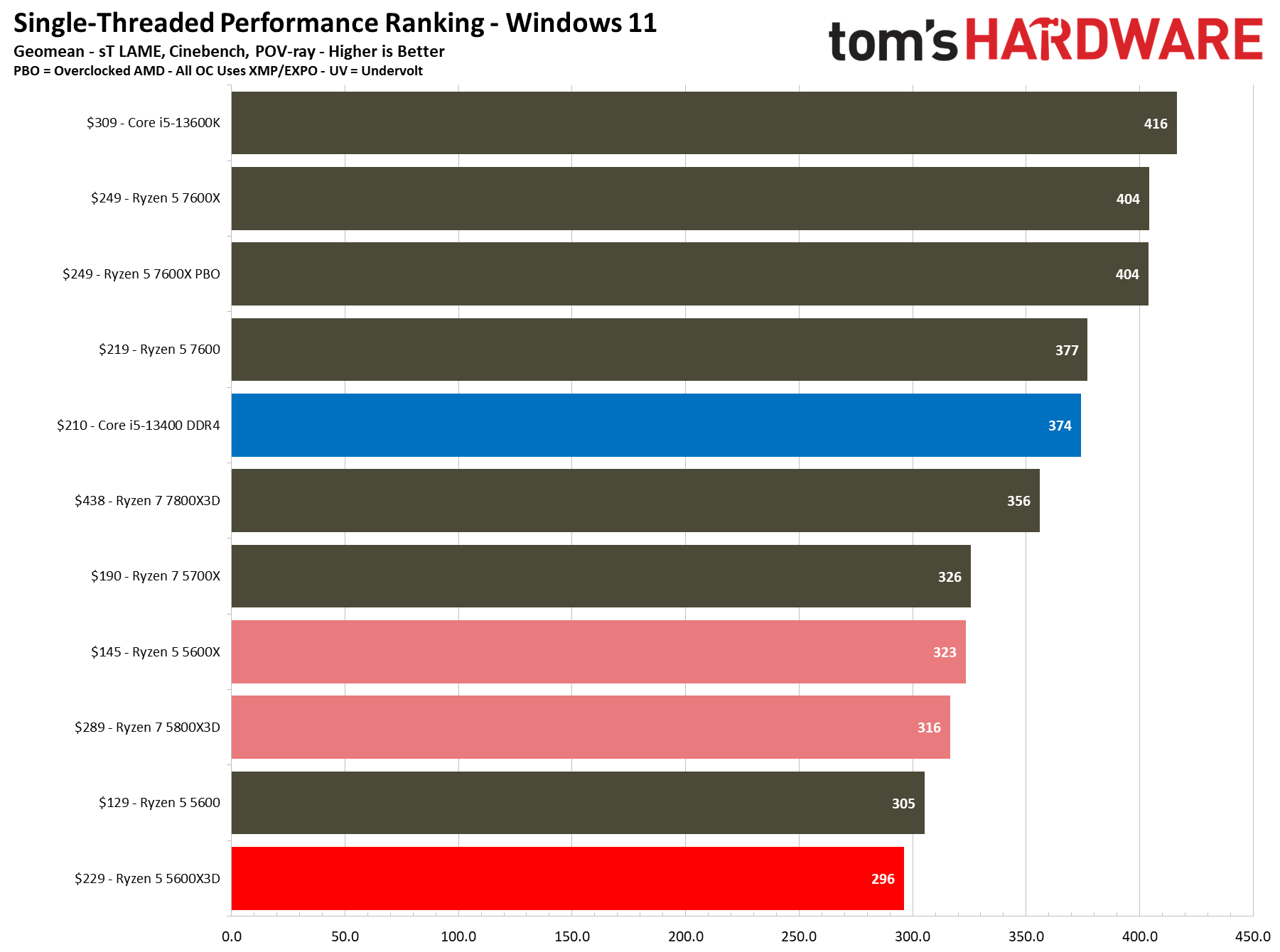
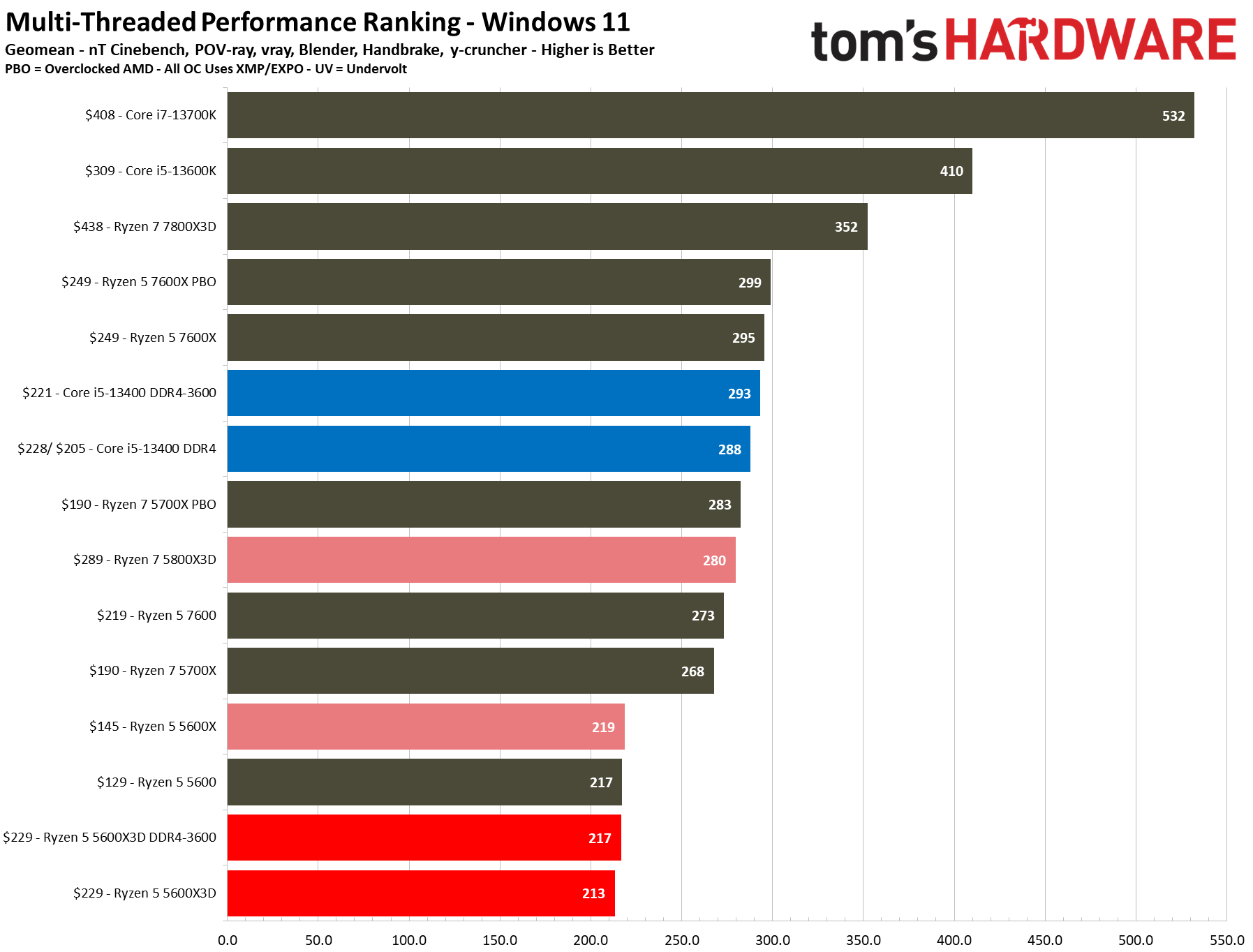
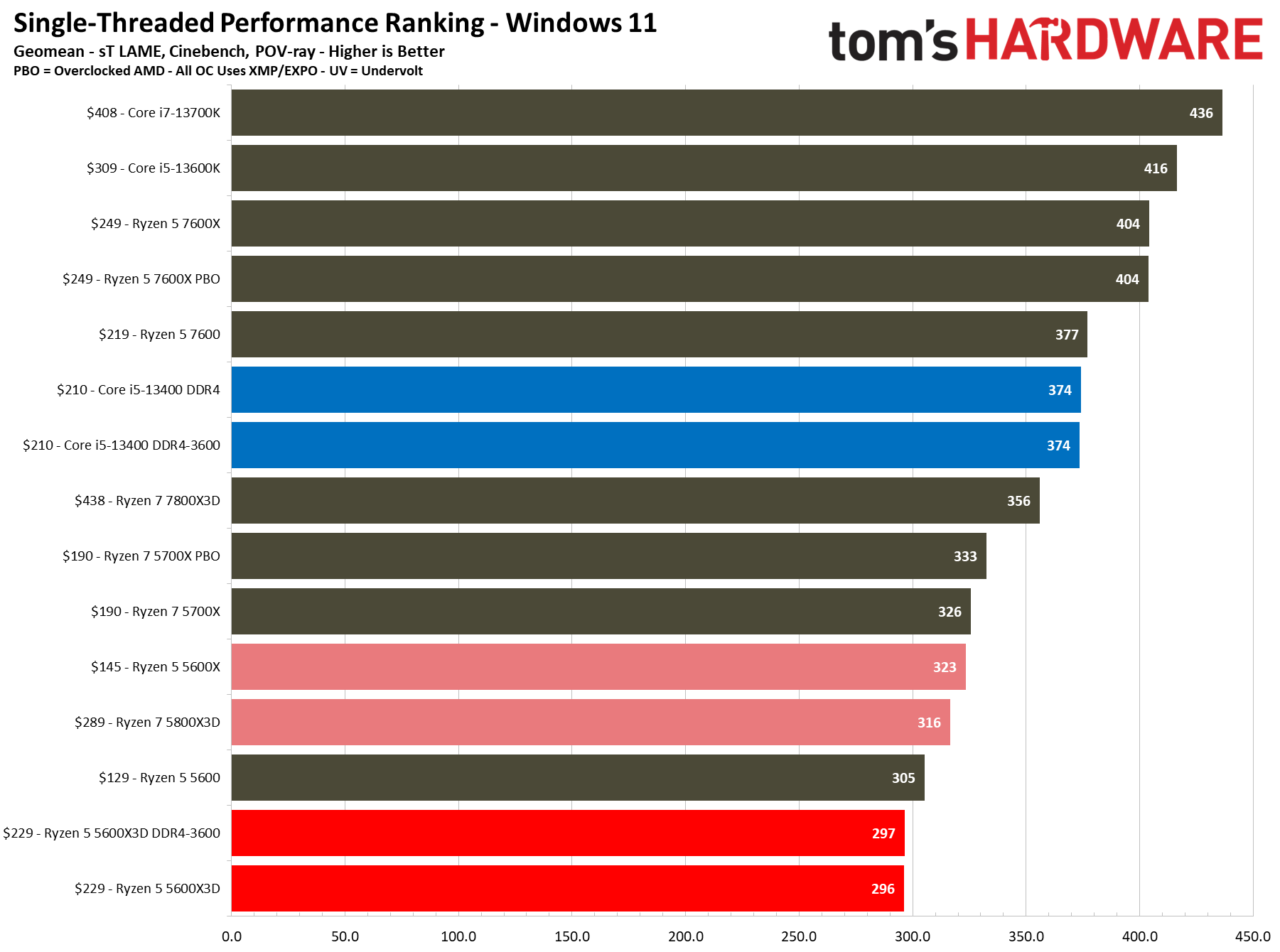
The first slides are simplified without the overclocking configs, while the remainder of the slides in the album covers the full roster of tested configurations. We boil productivity application performance down into two broad categories: single- and multi-threaded. These slides show the geometric mean of performance in several of our most important tests in each category, but be sure to look at the individual benchmark results below.
The Ryzen 5 5600X3D’s 3D V-Cache tech provides a major performance uplift in games, but the resulting lower boost clock speeds hamstring performance in productivity applications. The 5600X3D's older Zen 3 microarchitecture and six CPU cores also factor in to make it a less-than-stellar performer in productivity applications.
The Intel Core i5-13400 is 35% faster in threaded applications and 26% faster in single-threaded work than the 5600X3D, highlighting that it’s the far better choice if you’re looking for an all-rounder in this price range.
The Ryzen 5 5600X3D does manage to tie the Ryzen 5 5600X in our threaded benchmarks, and that is a result of its higher 105W TDP rating. As you can see in our power testing on the following page, at times, the Ryzen 5 5600X3D will draw more power than the 65W Ryzen 5 5600X in threaded applications. That’s because the 5600X has a lower TDP limit. In contrast, the 105W Ryzen 5 5600X3D regularly peaked at 85W, which allows it to maintain comparable (or even higher) all-core clock speeds when under heavy load. This does help in threaded applications — just not much.
The higher TDP doesn’t help in lightly threaded work, though, as the 5600X3D’s lower single-core boost frequency significantly hampers performance in single-threaded work, giving the 5600X a 9% lead. Even the $129 Ryzen 5 5600 is 3% faster than the 5600X3D in single-threaded work and 2% faster in threaded work, highlighting the disparity we see between the 5600X3D’s gaming performance and its performance in desktop PC productivity applications.
You’ll need to carefully assess your common usage and workloads if you’re upgrading to a 5600X3D, and plan accordingly. While you gain tremendously in gaming performance, you will lose quite a bit of performance in applications. If you’re upgrading an existing AM4 system and looking for a more balanced performer, you should give the eight-core Ryzen 7 5700X a close look. This chip is great a value at its current retail pricing.
The Ryzen 5 5600X3D clearly isn't designed to deliver robust performance in applications outside of gaming, so the below results are fairly predictable. As such, we'll limit our commentary throughout the application benchmarks, though we will call out a few areas of interest.
Rendering Benchmarks on AMD Ryzen 5 5600X3D
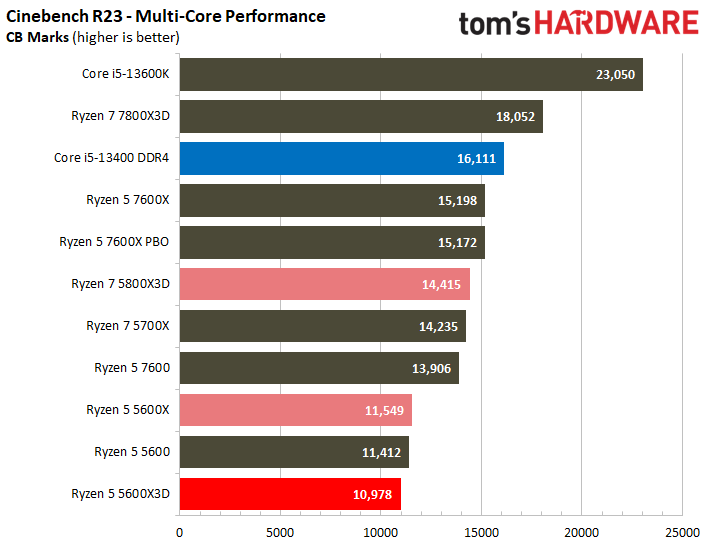

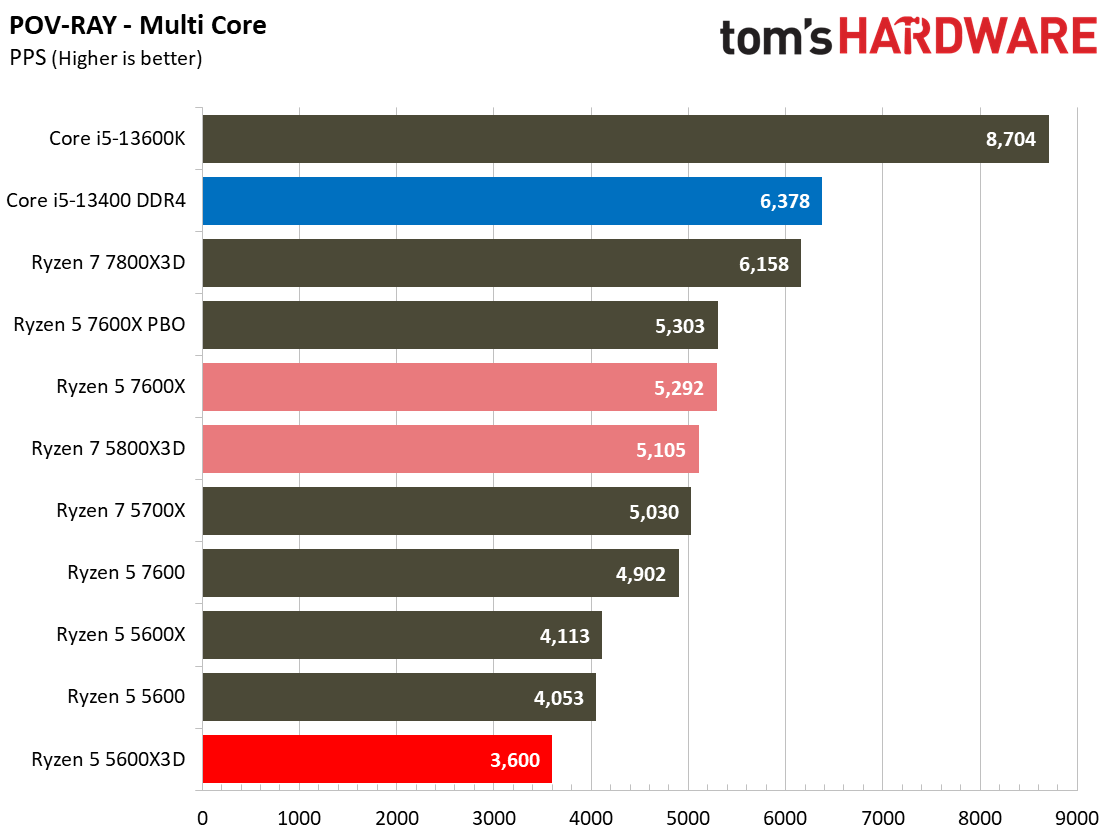

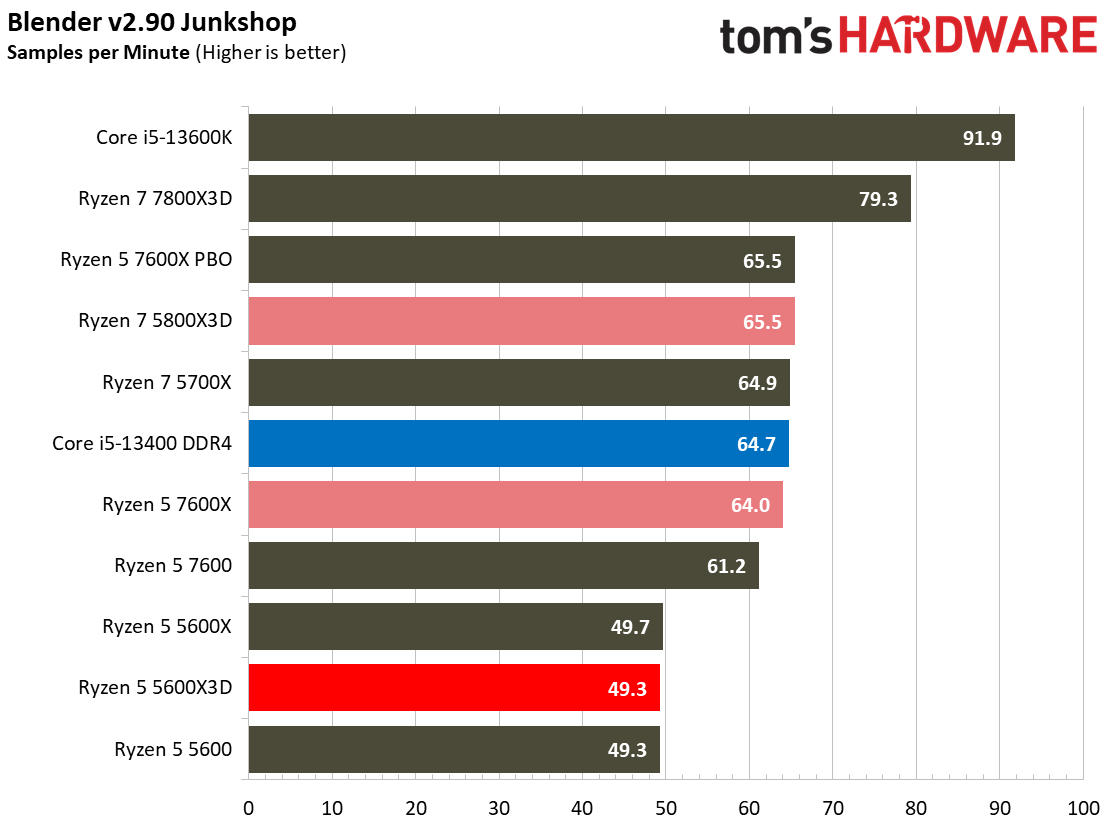
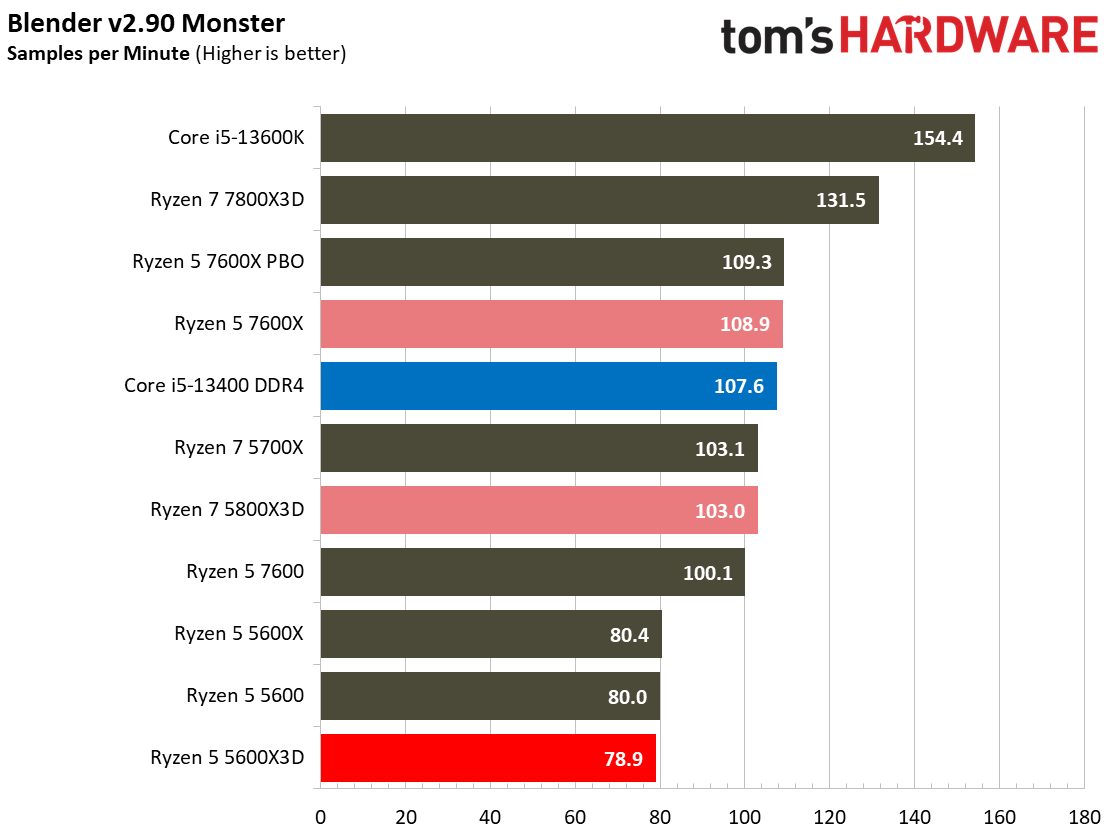
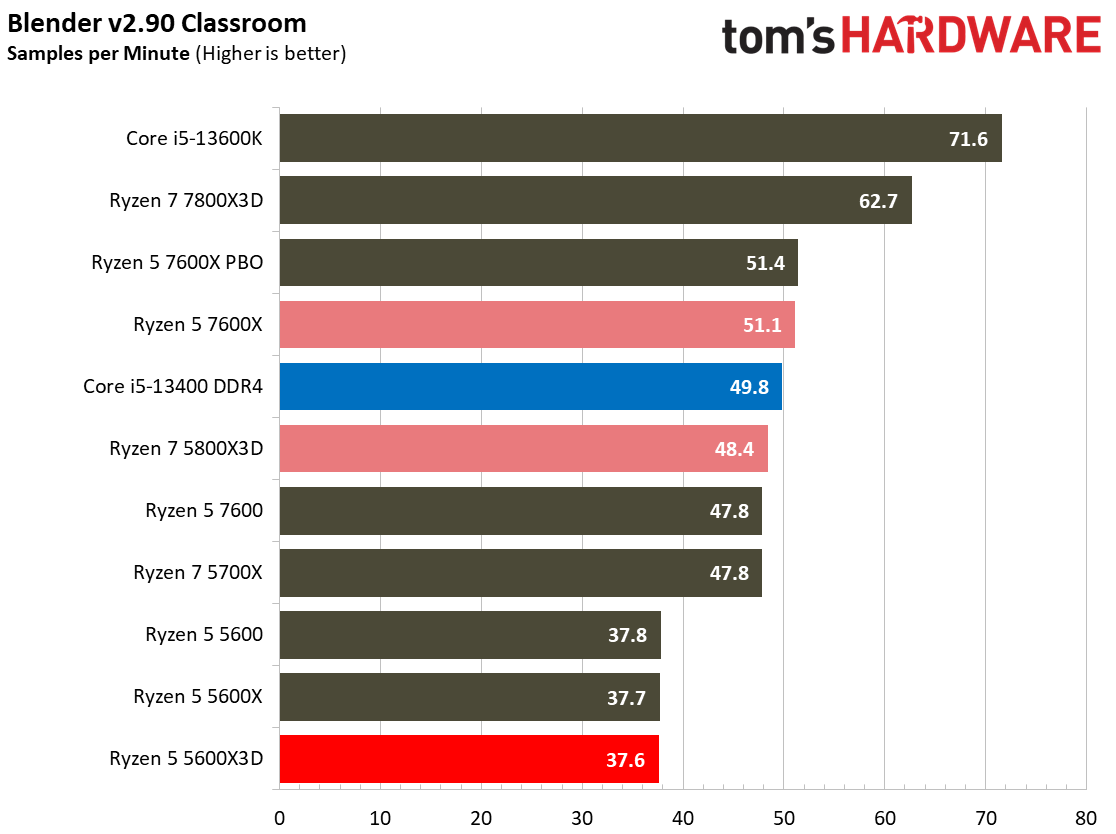
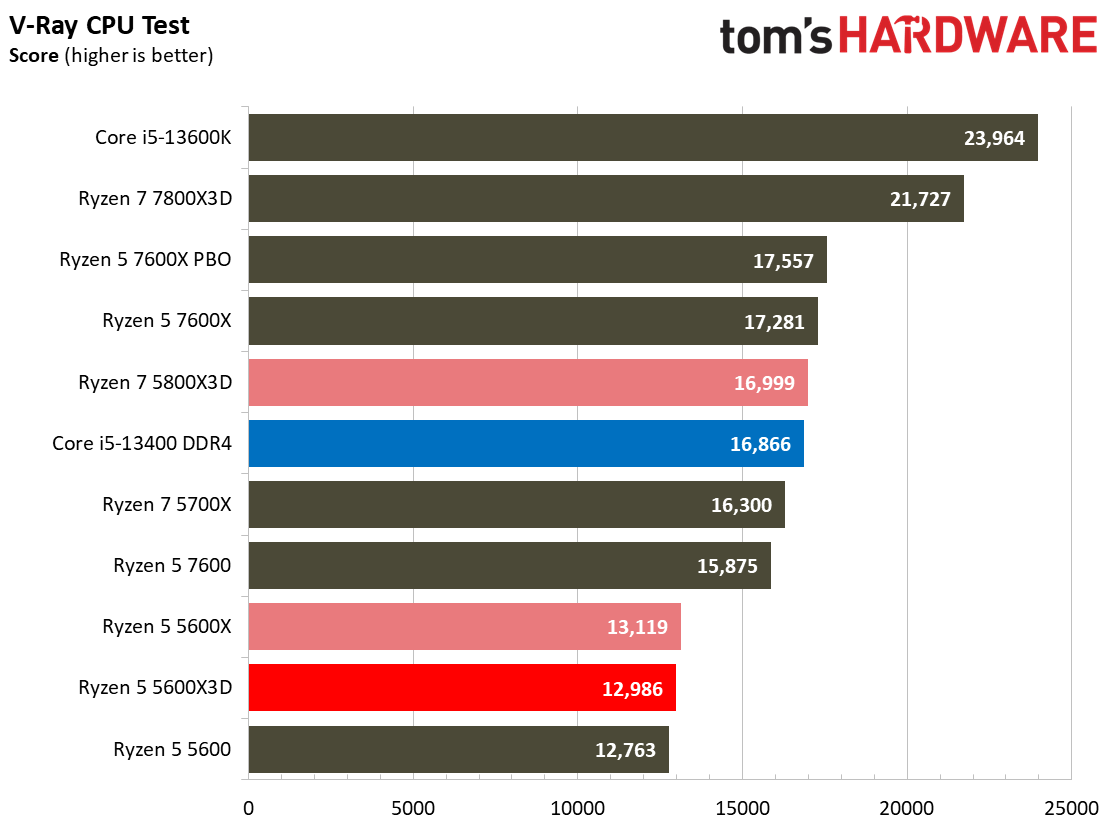
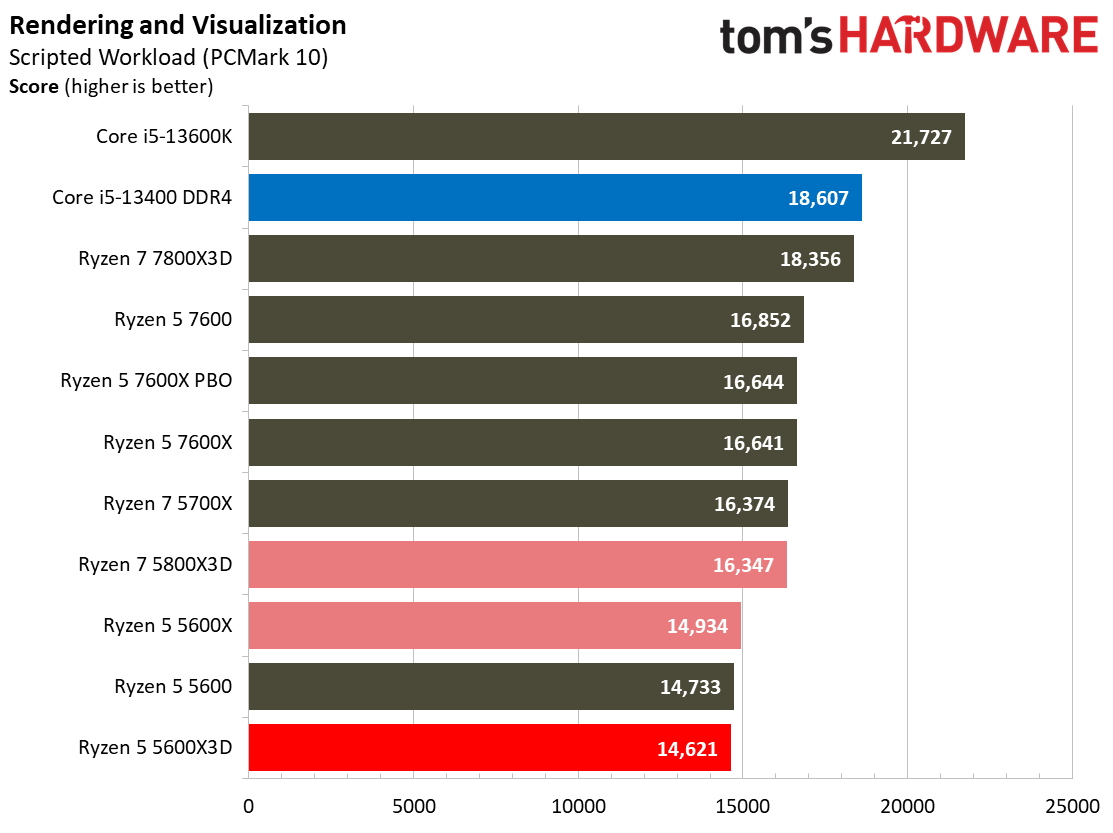
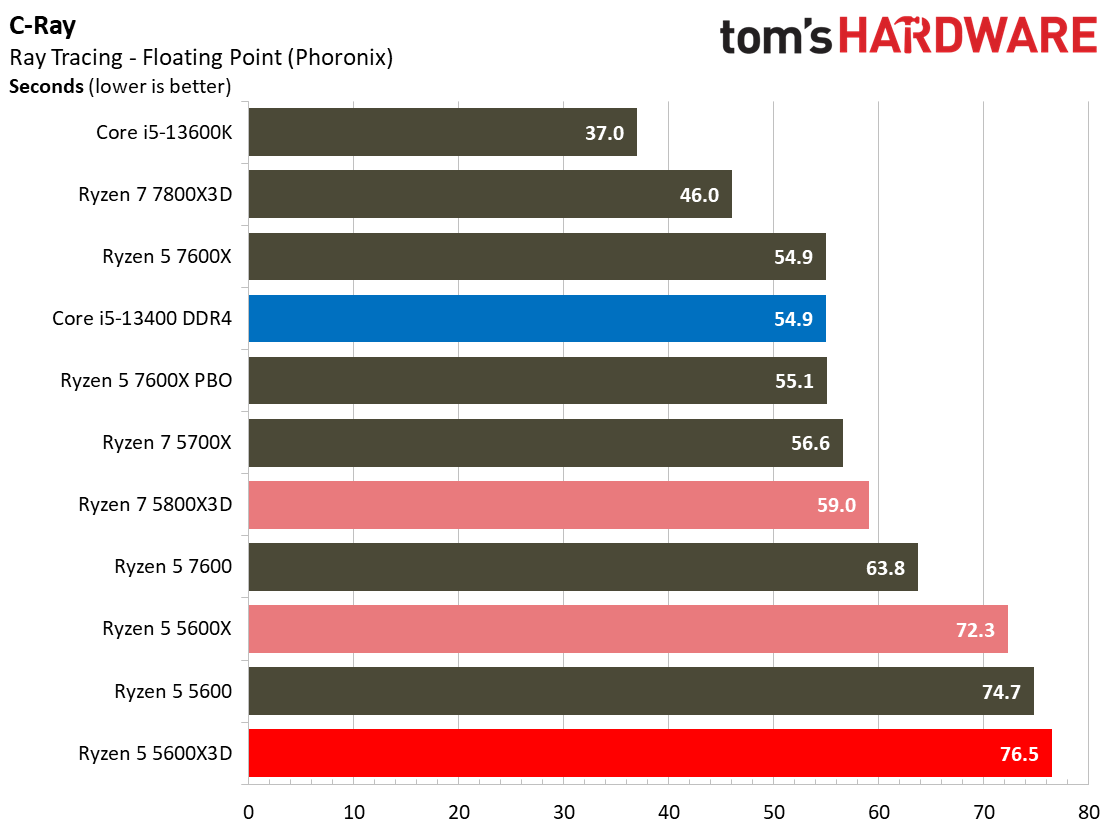
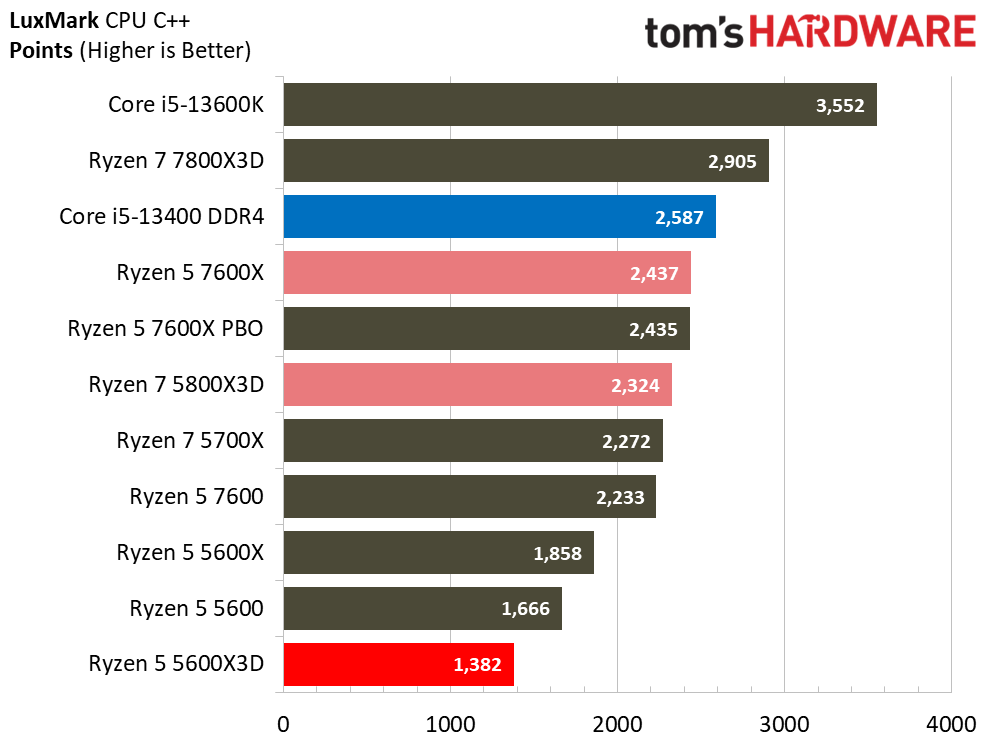
The Ryzen 5 5600X is five percent faster than the 5600X3D in the multi-threaded Cinebench benchmark, and the chip continues to lag the field by substantial amounts throughout the full spate of both single- and multi-threaded benchmarks. The Ryzen 5 5600X3D clearly isn't the best option for rendering workloads, but that's the sacrifice you'll make to access the class-leading gaming performance.
Encoding Benchmarks on AMD Ryzen 5 5600X3D
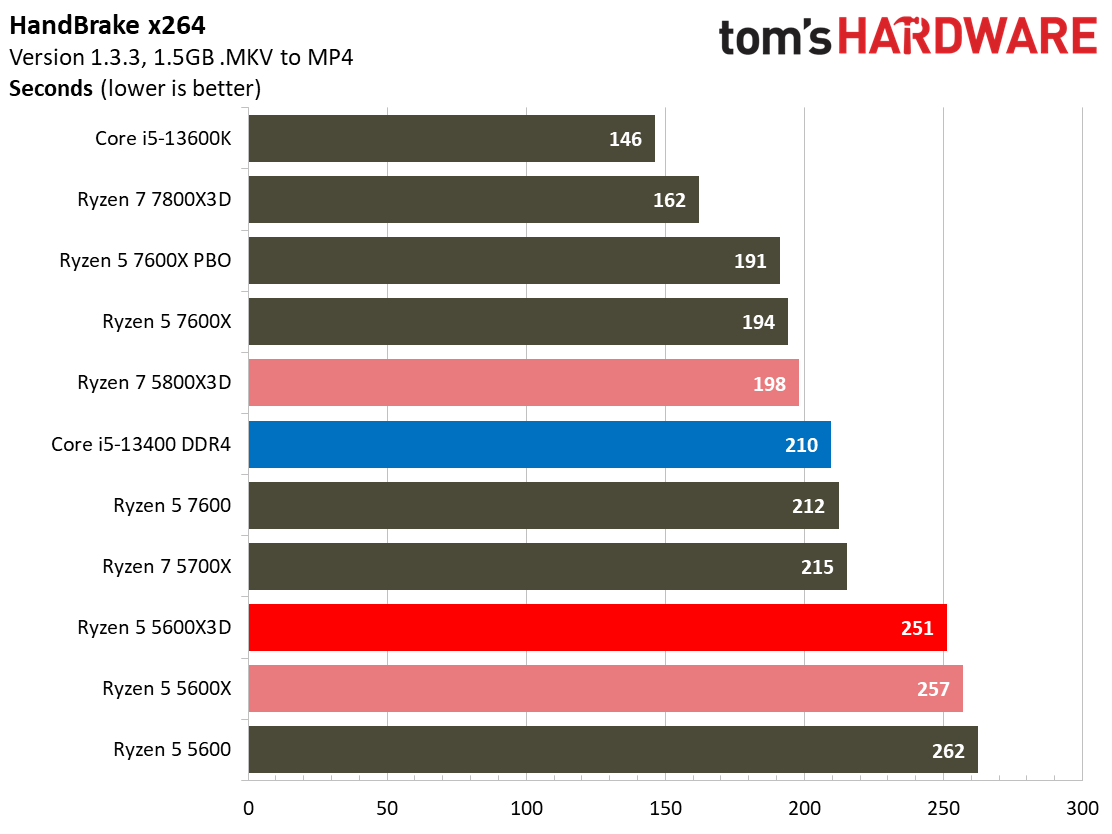
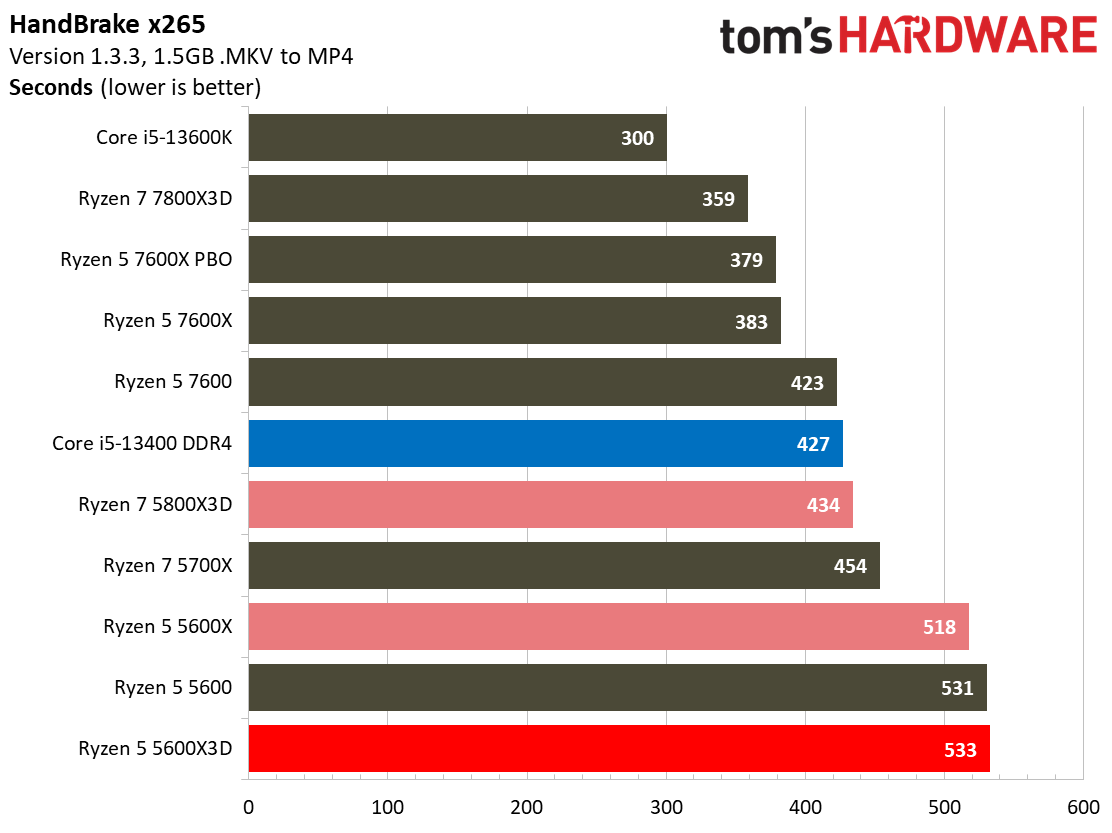
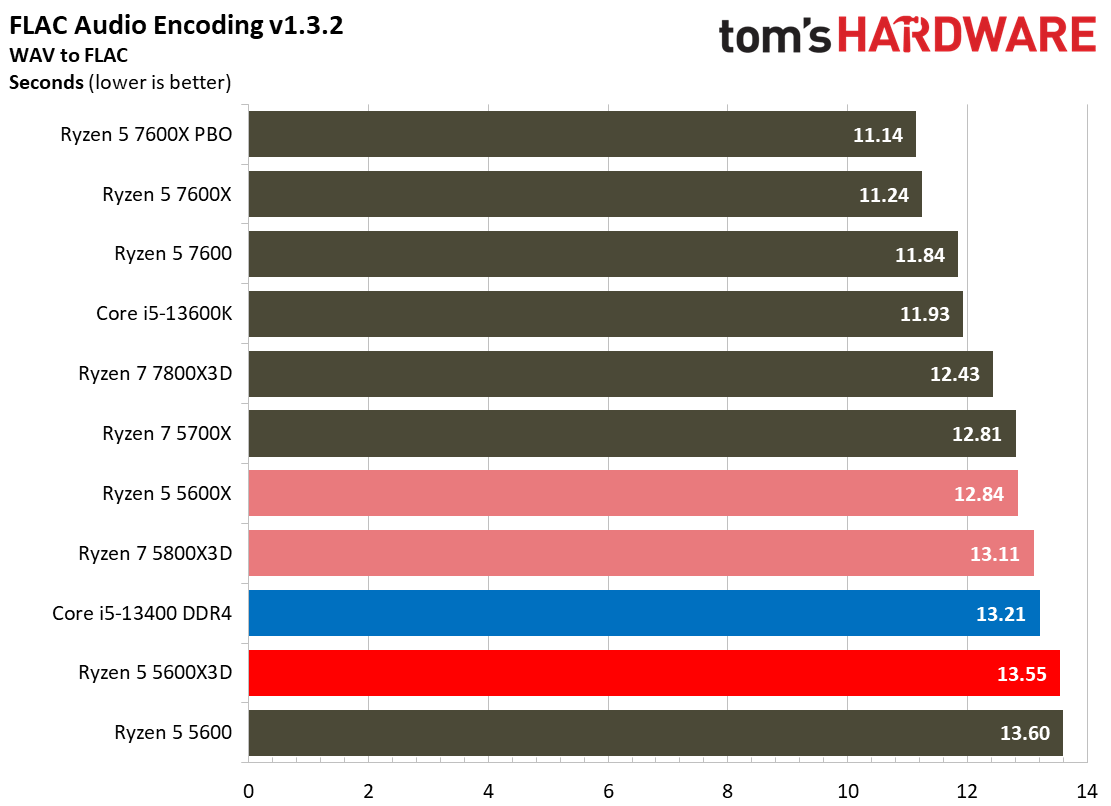
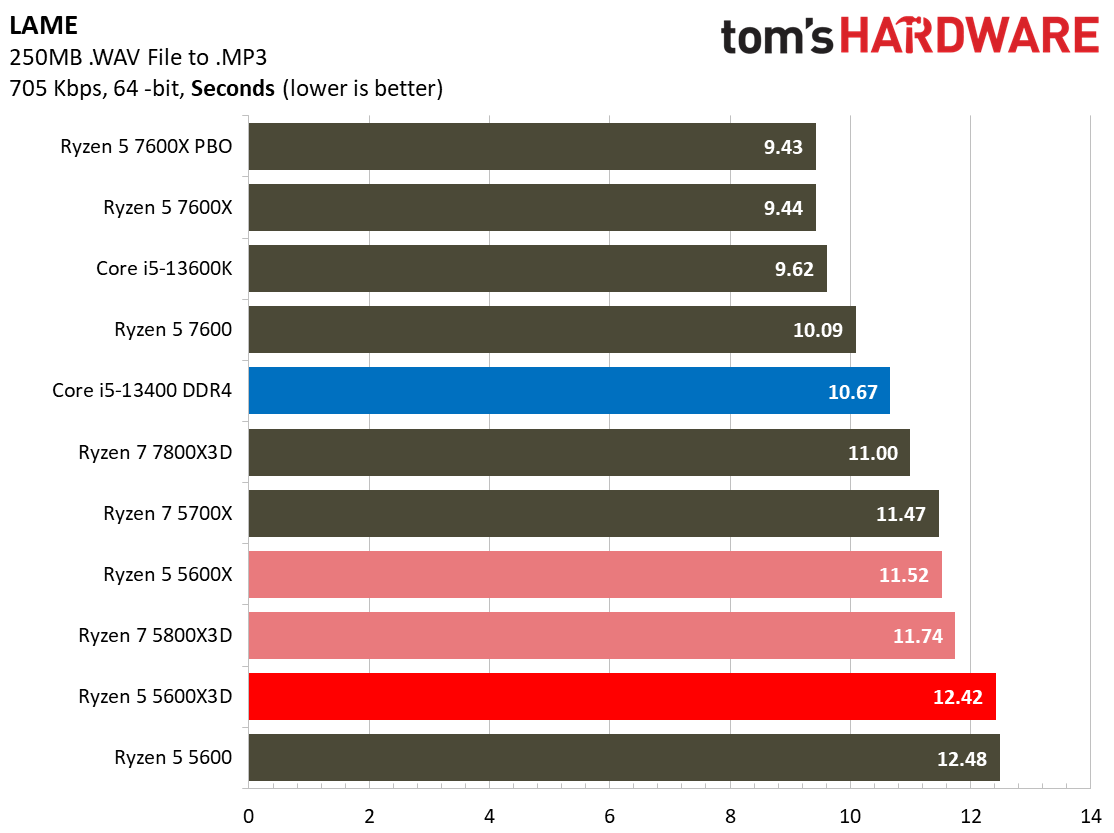
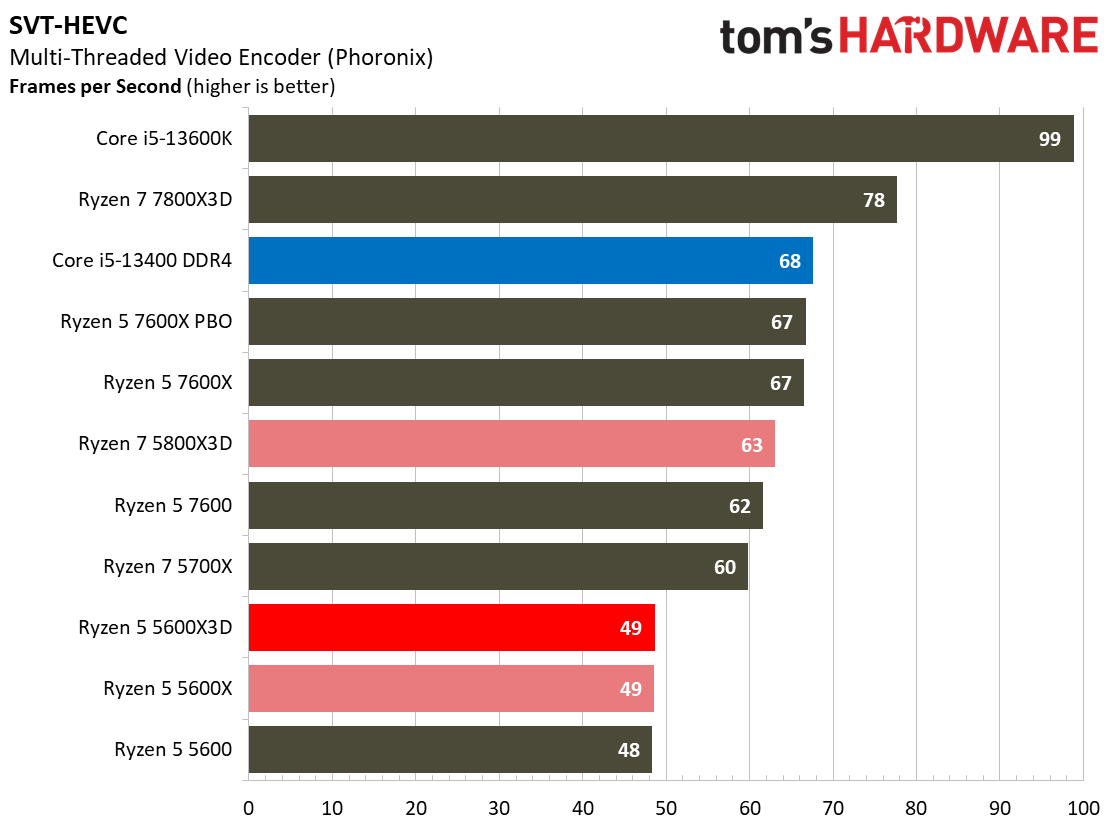
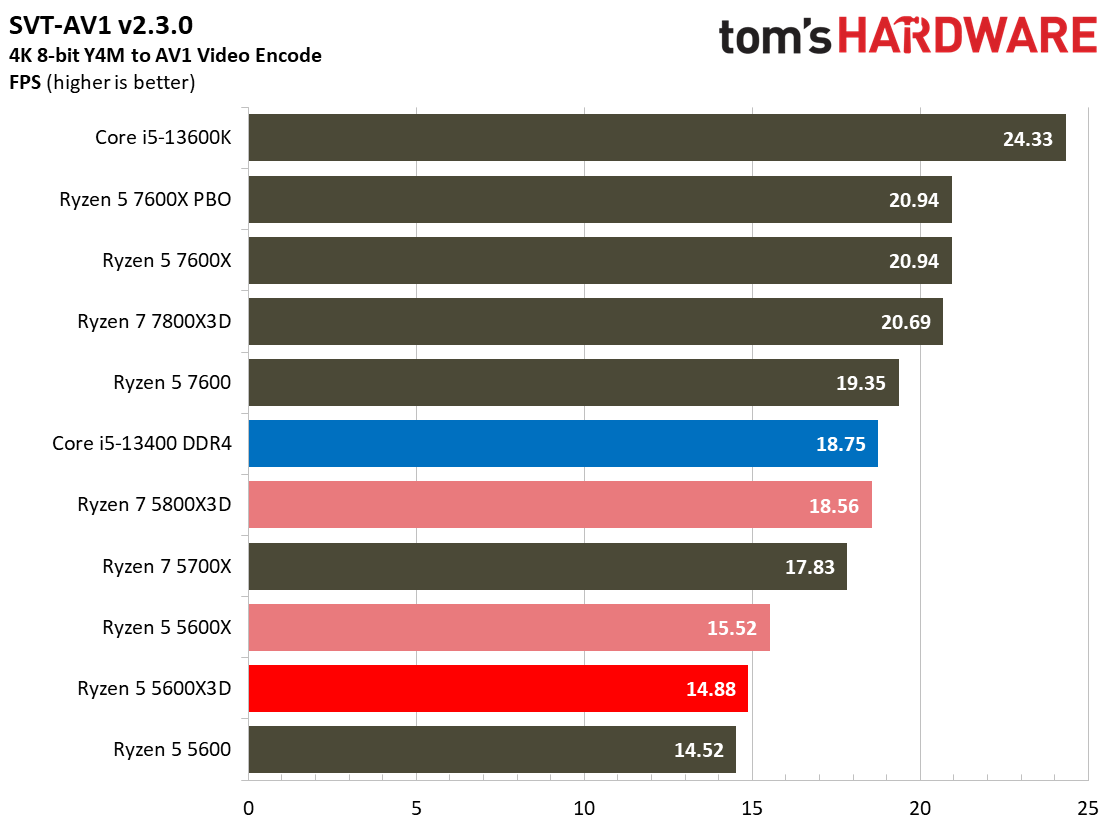
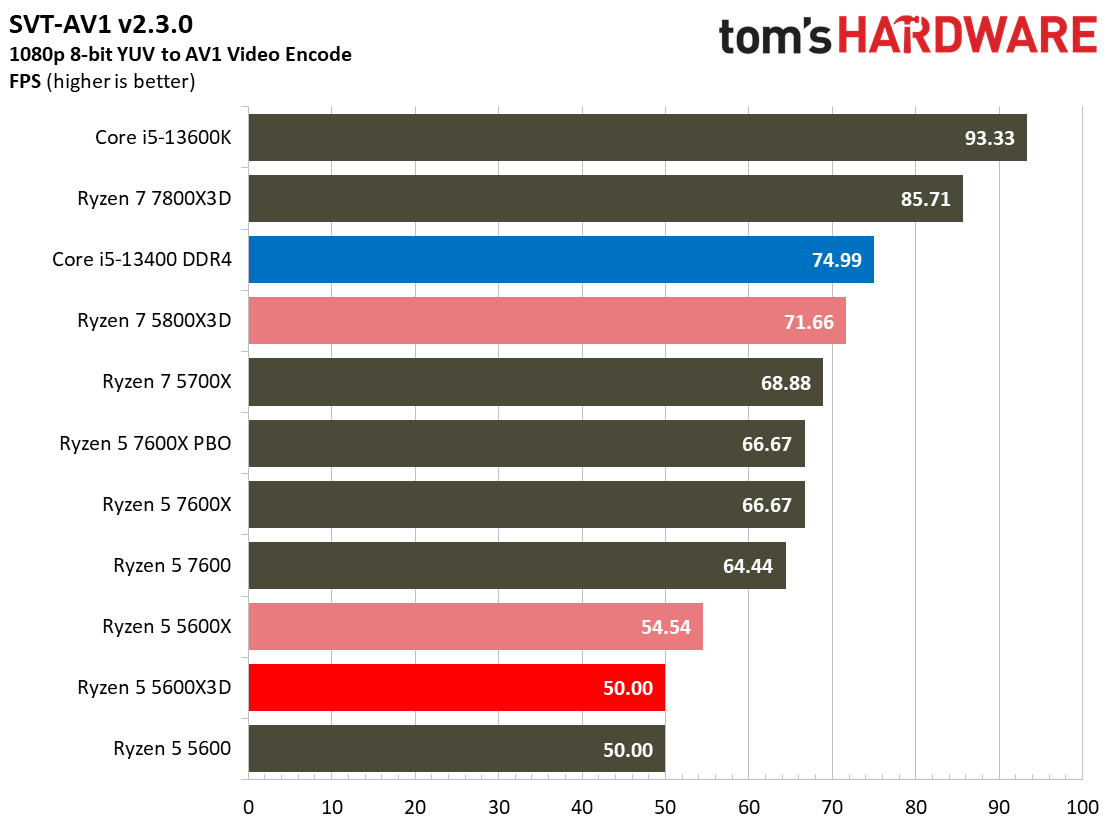


Most encoders tend to be either heavily threaded or almost exclusively single-threaded — it takes an agile chip to master both disciplines. Handbrake, SVT-HEVC, and SVT-AV1 serve as our threaded encoders, while LAME, FLAC, and WebP are indicative of how the chips handle lightly-threaded engines.
The Ryzen 5 5600X3D is actually faster than the Ryzen 5 5600X in the x264 HandBrake test, and our power logging indicates that the chip ran at a higher power draw, and thus higher all-core frequency, during this benchmark. That didn't hold true throughout the rest of the tests as the 5600X3D continued to lag the rest of the field.
Adobe, Web Browsing, Office, and Productivity on AMD Ryzen 5 5600X3D




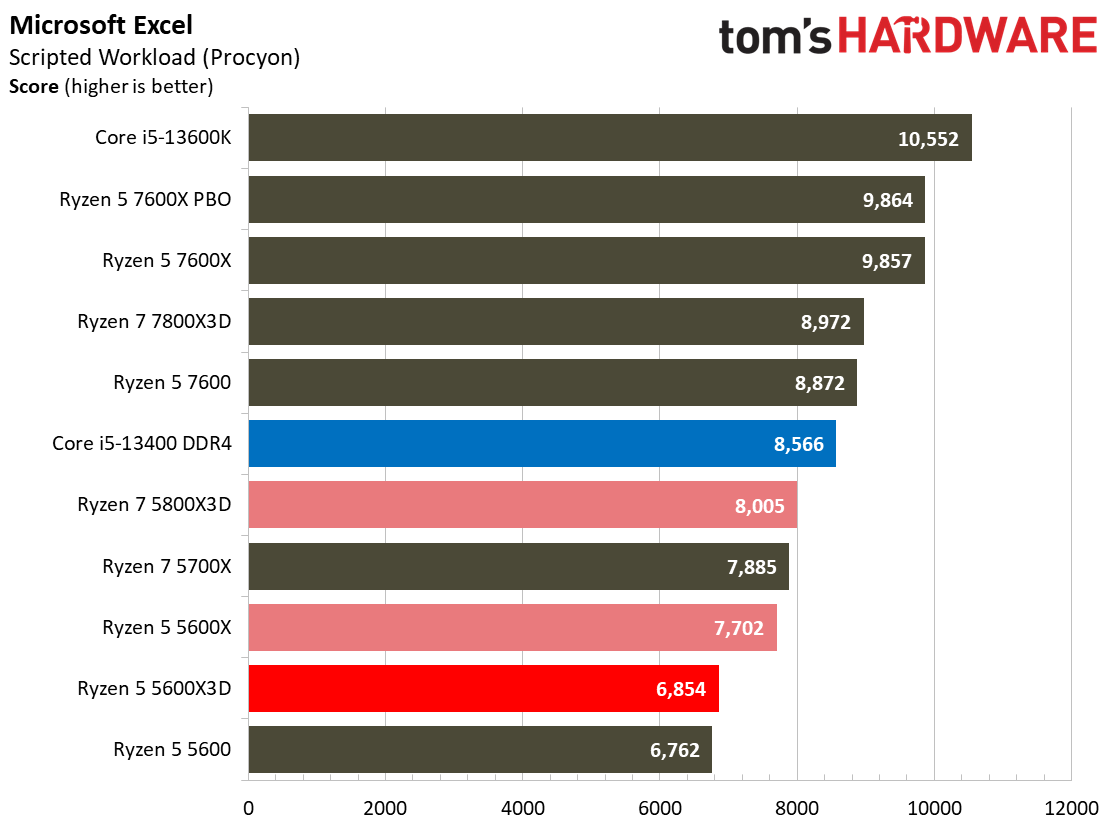
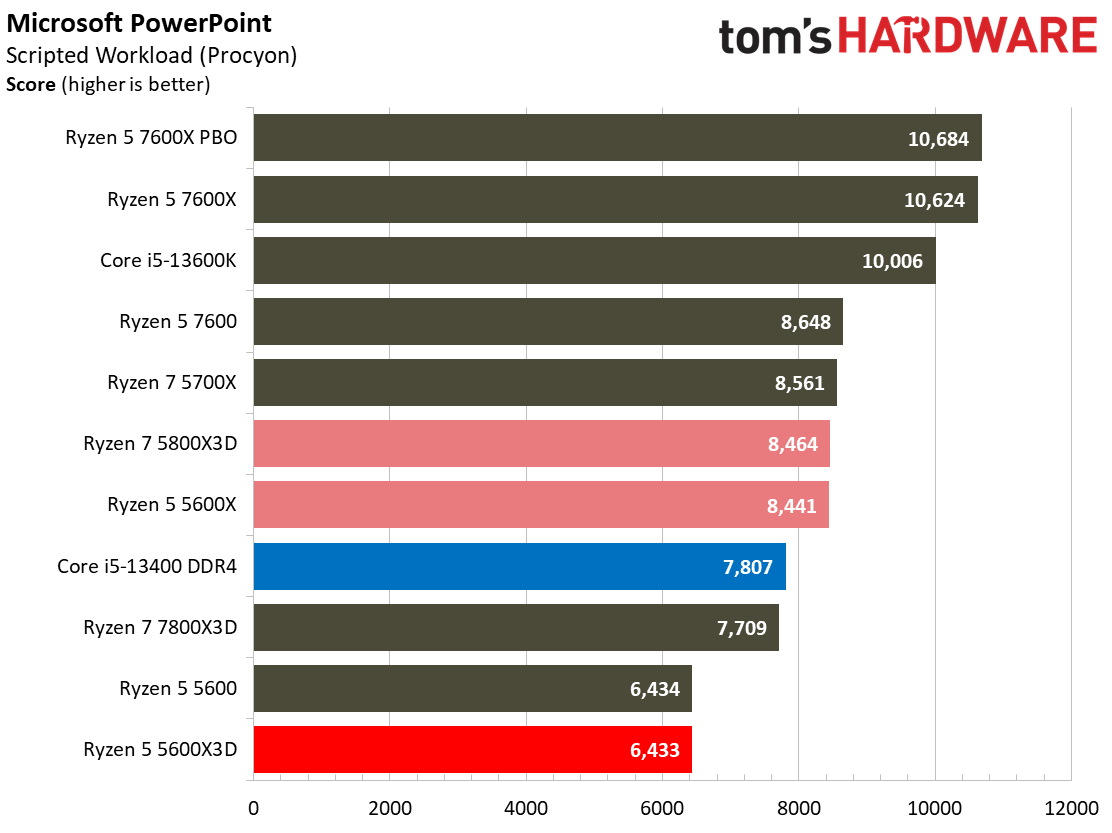
Compilation, Compression, AI Chess Engines, AVX-512 on AMD Ryzen 5 5600X3D
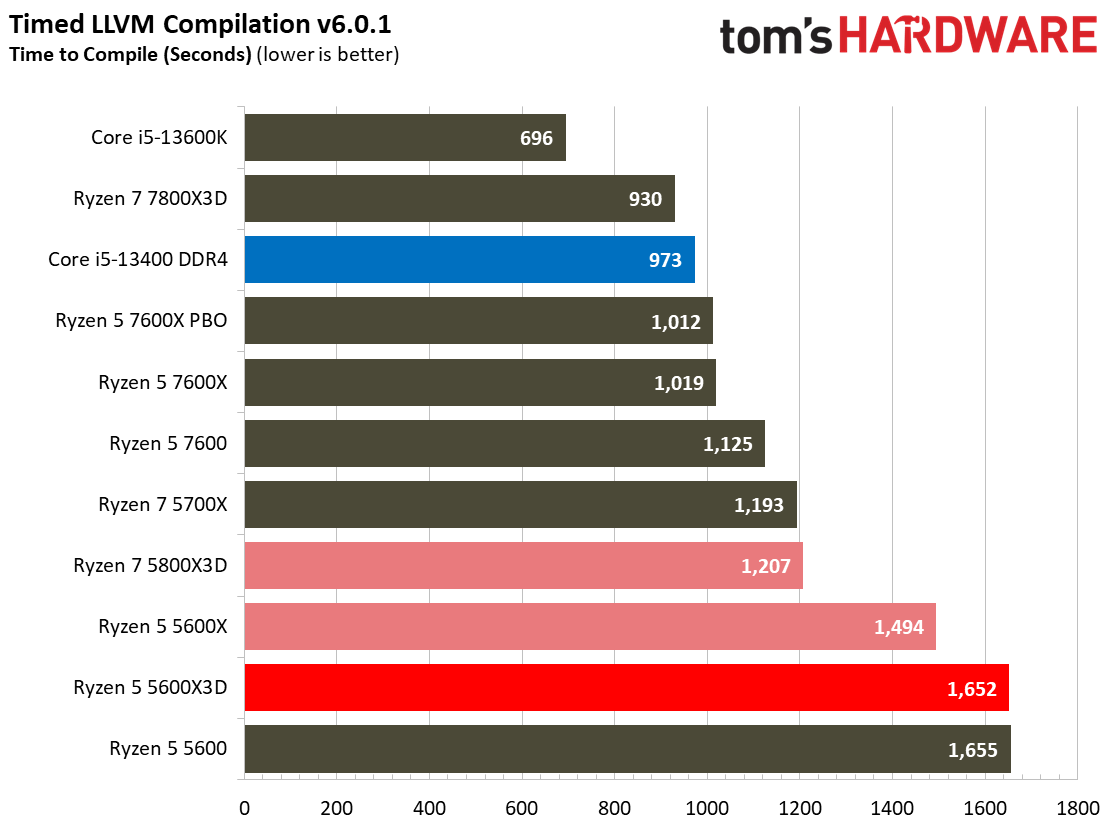
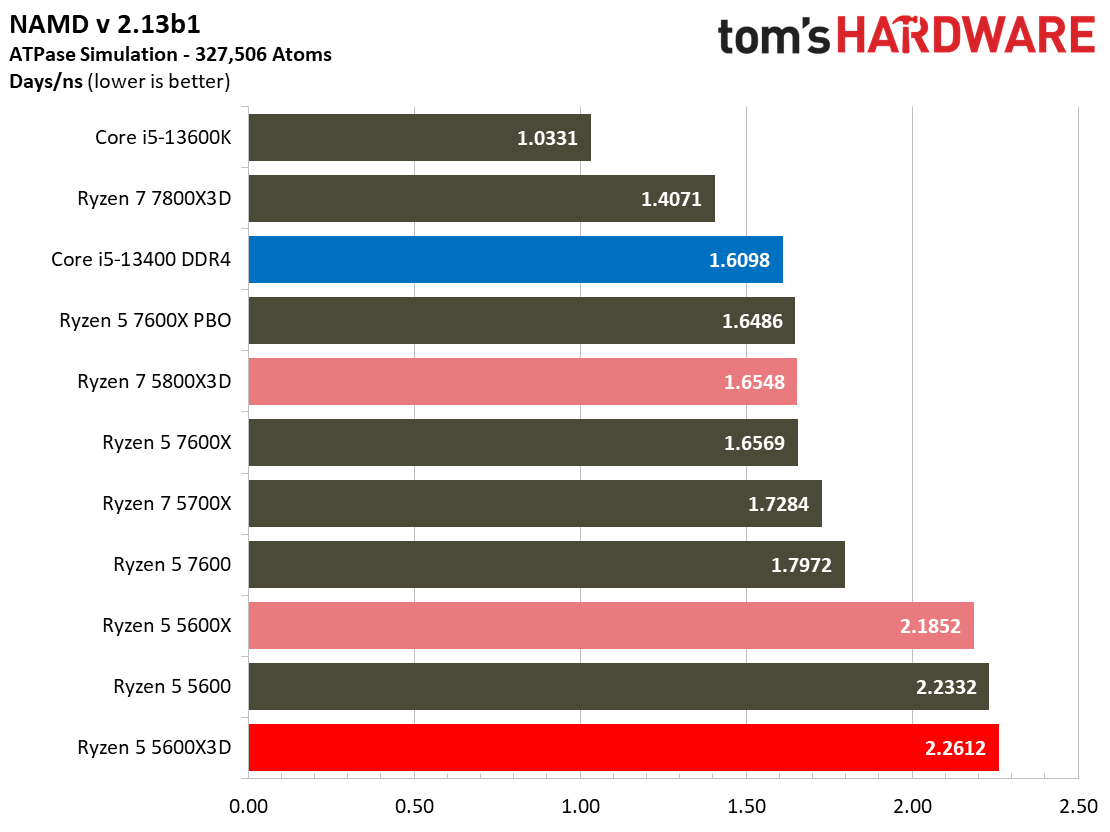
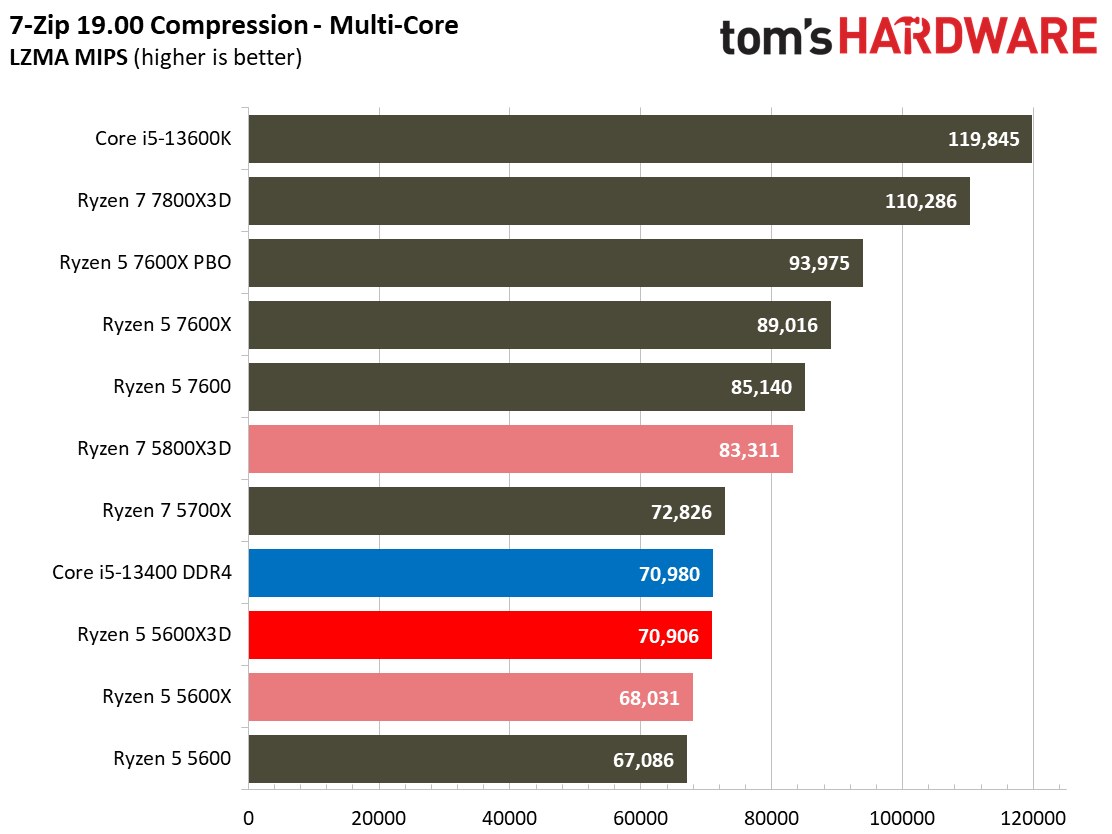
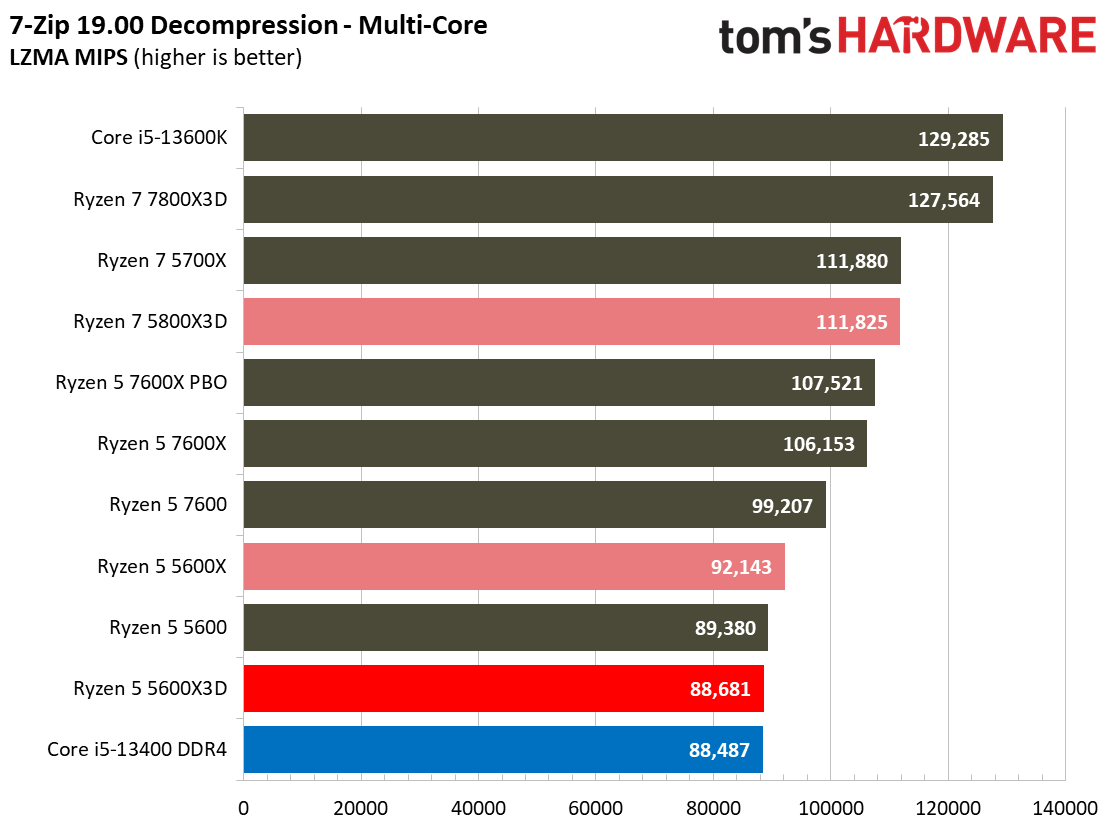
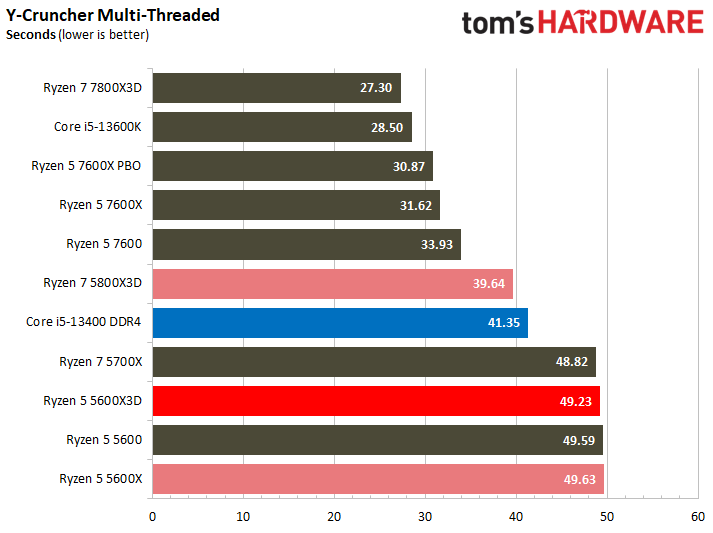
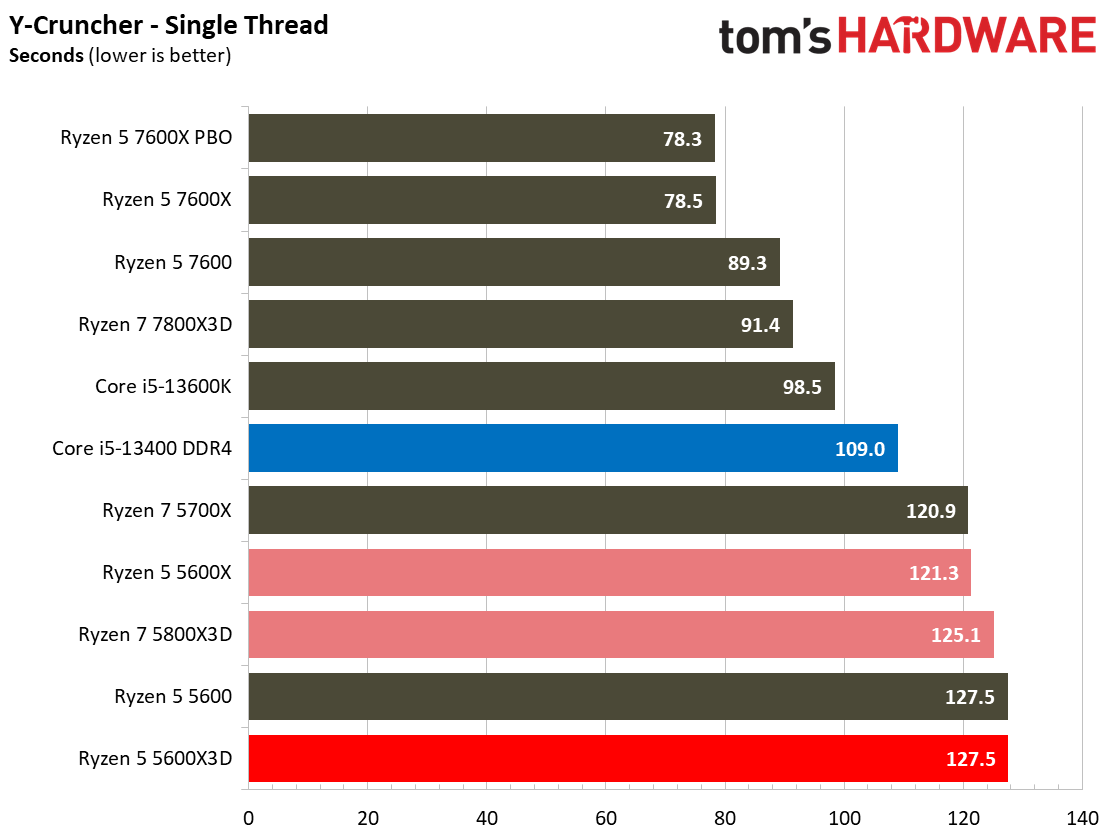
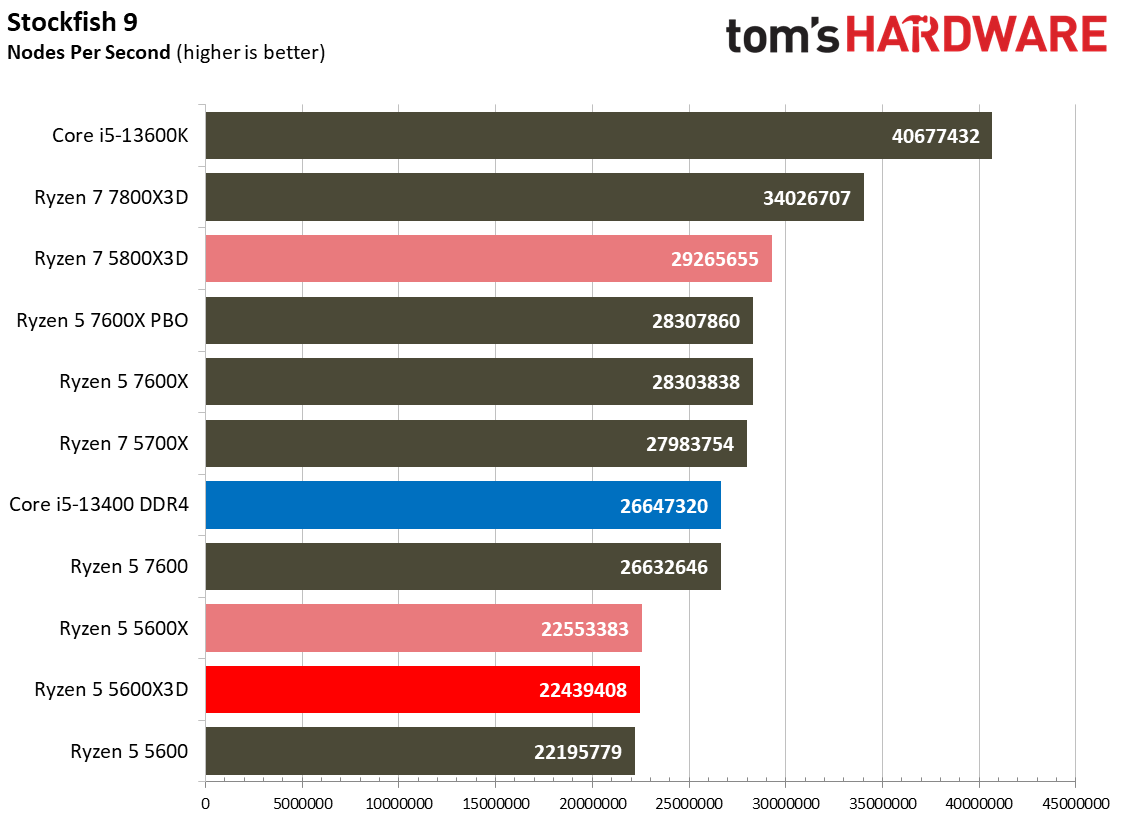
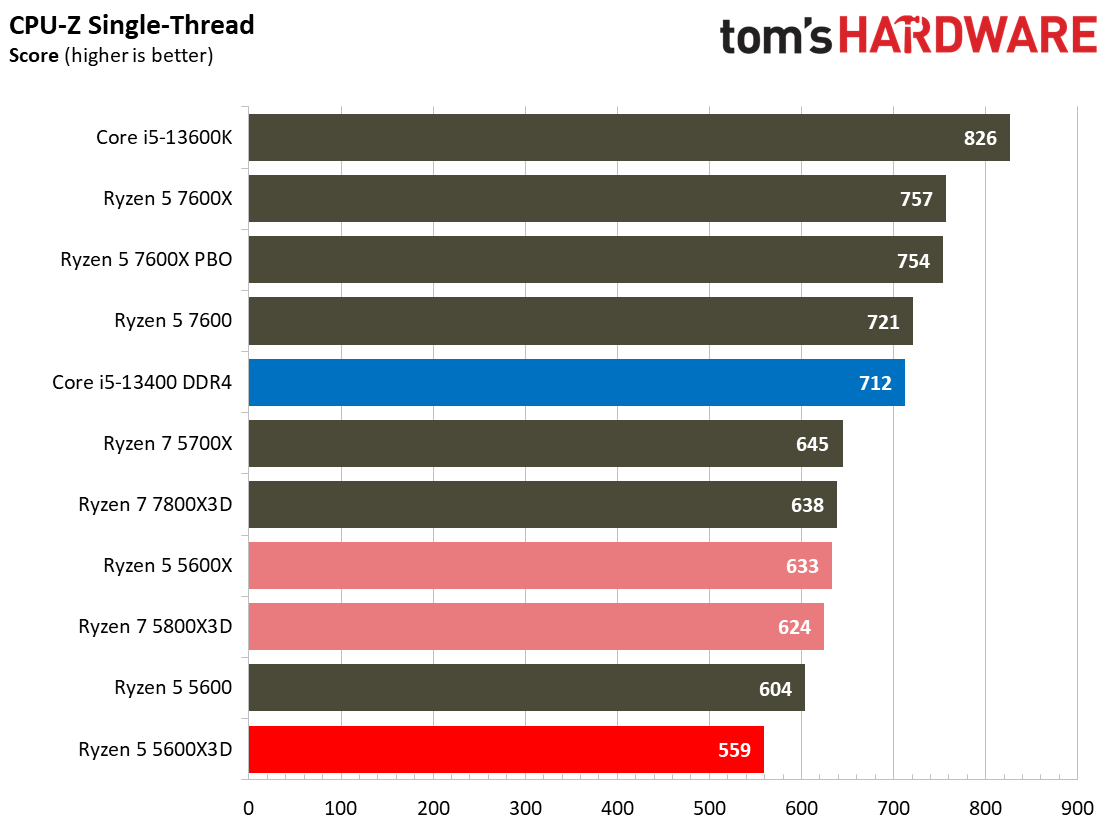
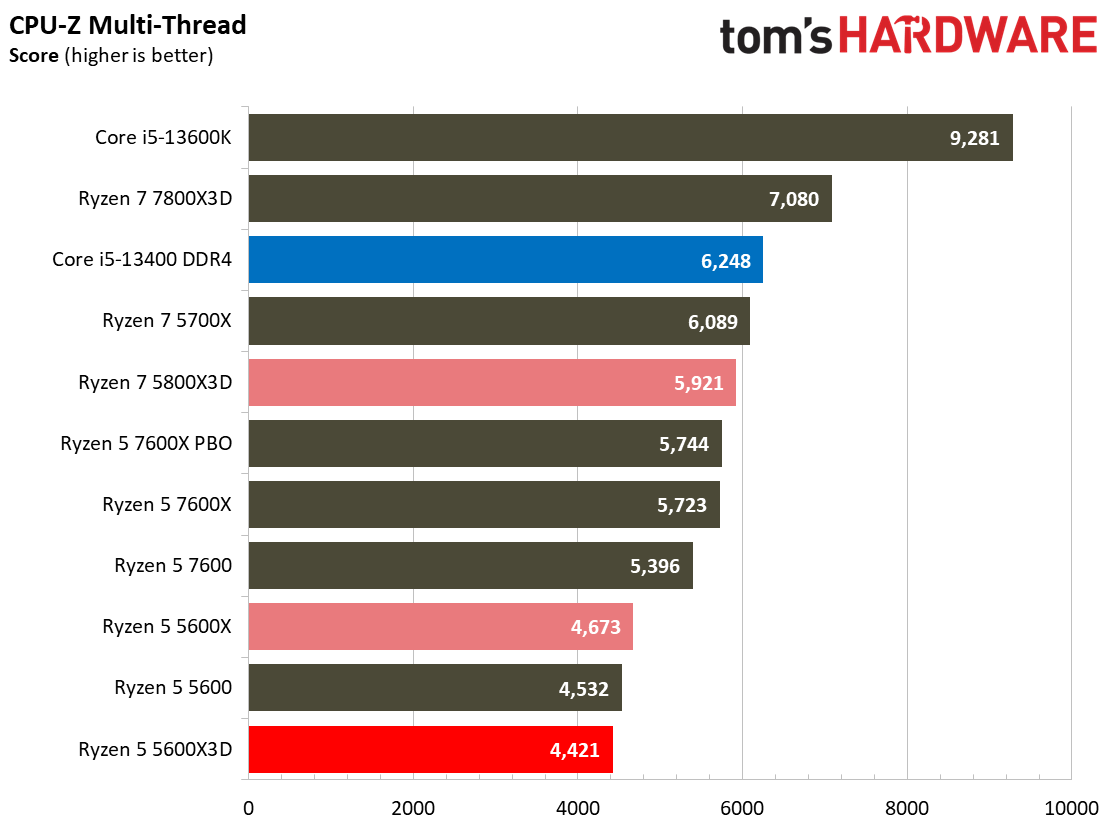
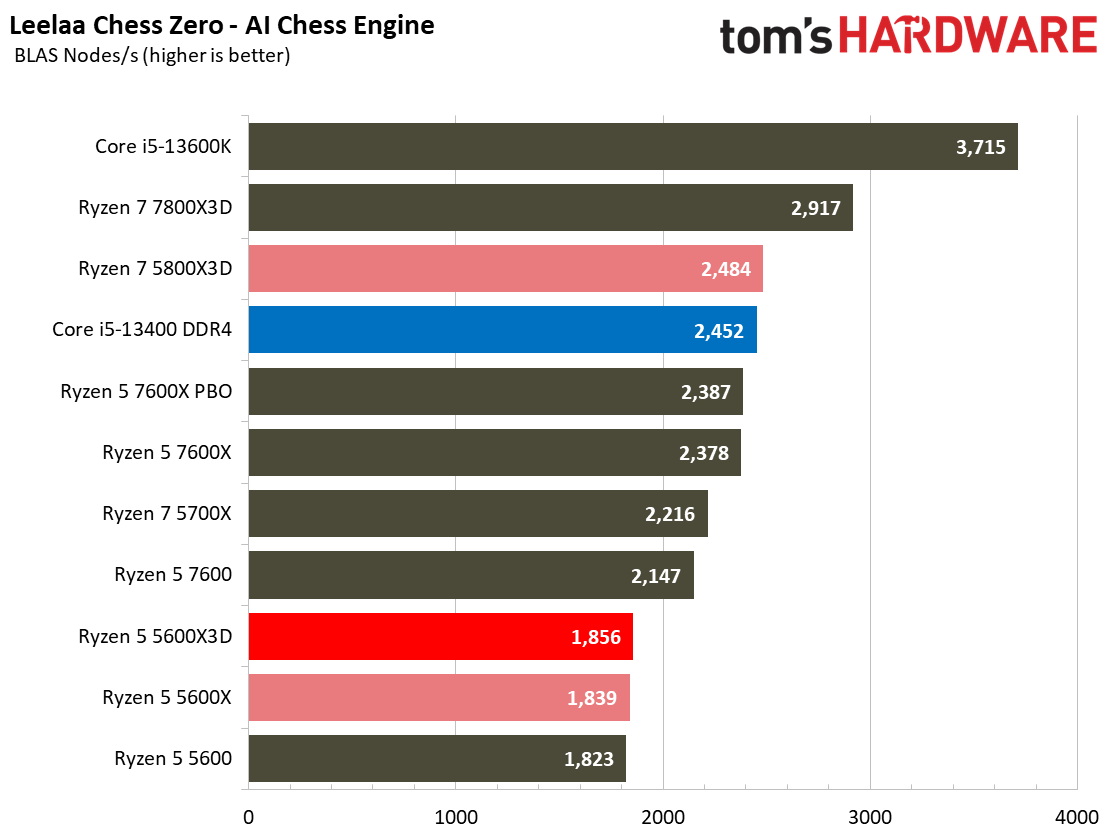
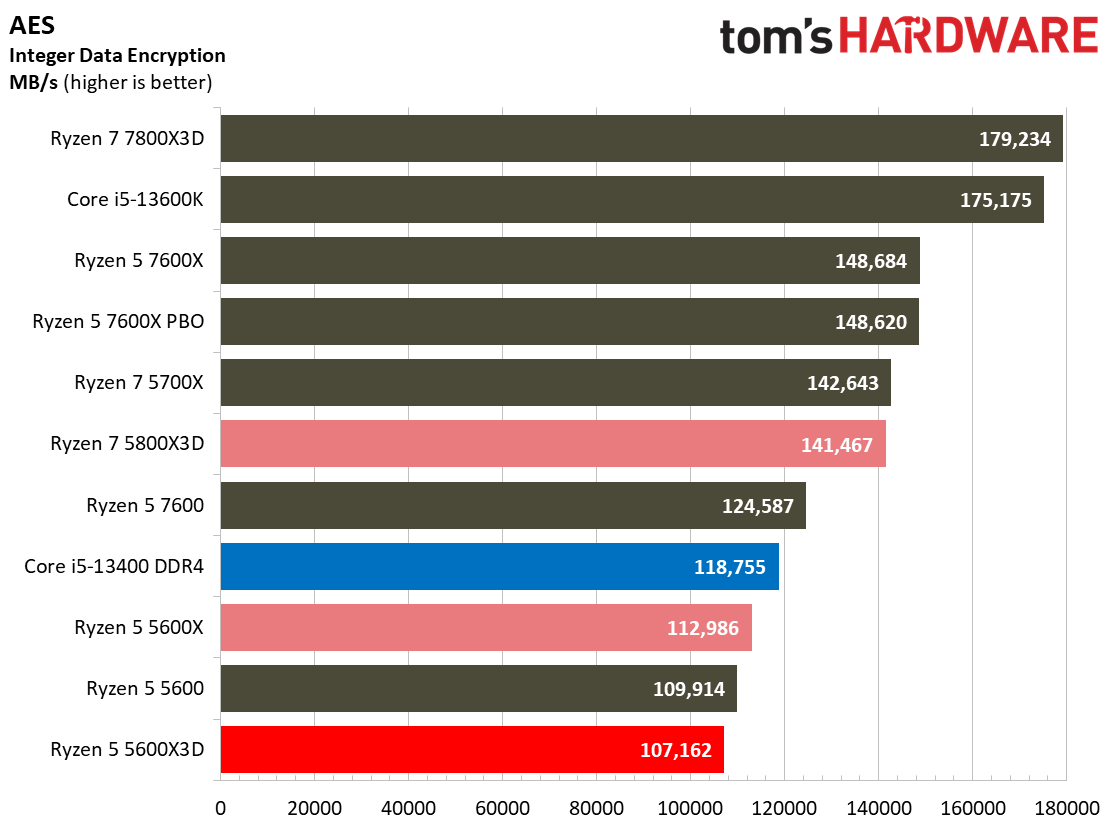
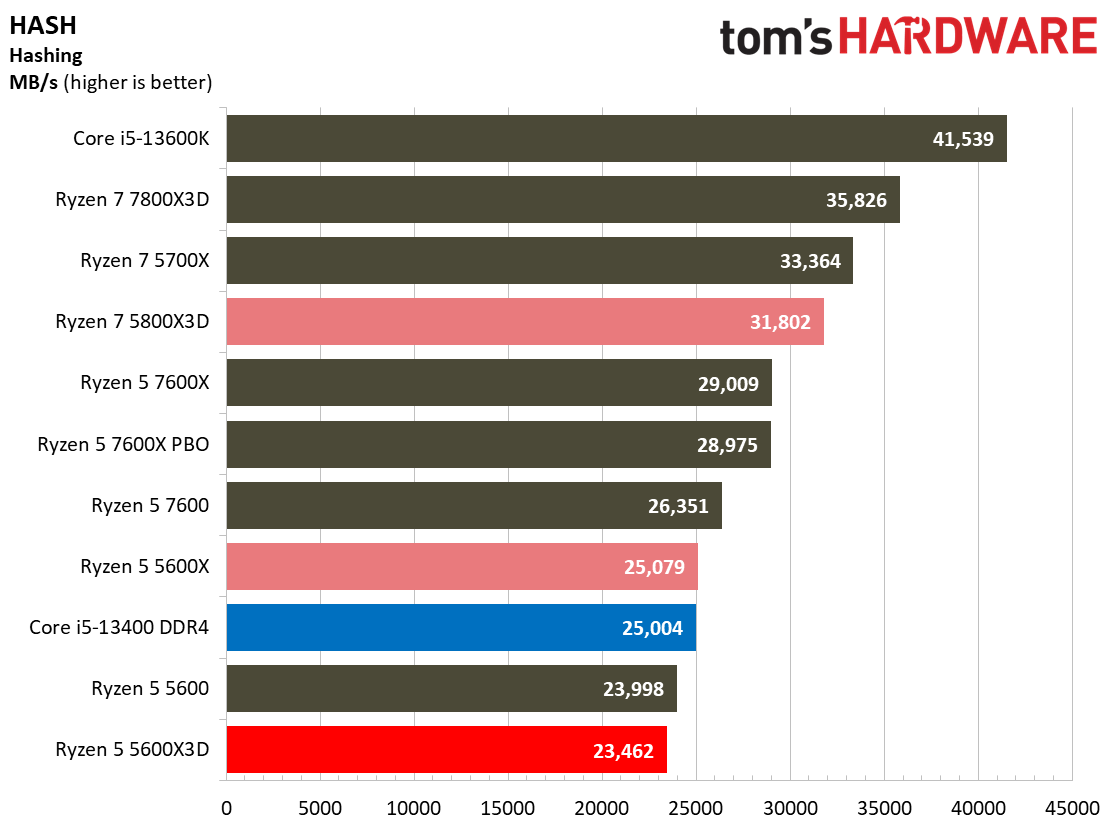

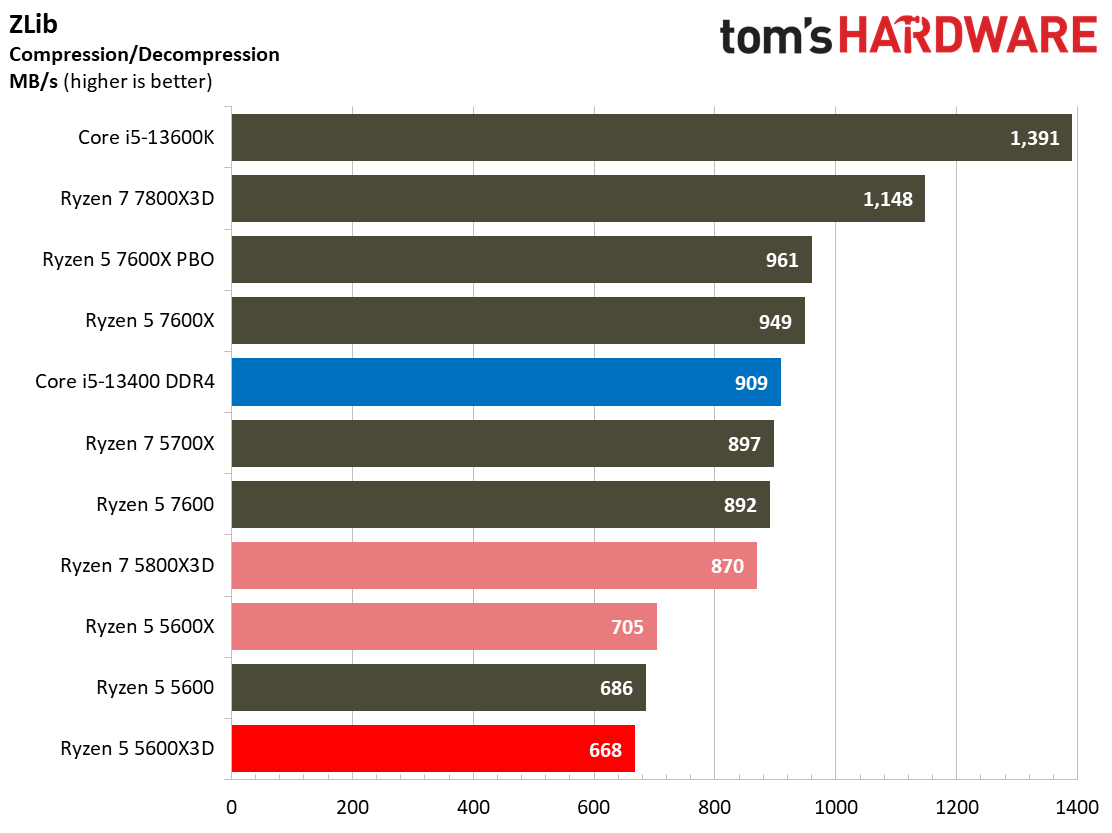
Aside from the compression/decompression tests, most of these benchmarks aren't as important for this class of processors, but we include them for the sake of completeness. These benchmarks run the gamut from the exceedingly branchy code in the LLVM compilation workload to the massively parallel molecular dynamics simulation code in NAMD to encryption and compression/decompression performance.
The demanding Y-cruncher benchmark computes Pi with the AVX instruction set and has optimizations for both Intel and AMD’s architectures. The Ryzen 5 5600X3D once more ekes out a slight win over the 5600X due to its higher TDP, which in turn allows it to sustain slightly higher all-core clocks in some situations. Those cases are rare, though, as the 5600X3D largely trails the rest of the pool in these benchmarks.
Get Tom's Hardware's best news and in-depth reviews, straight to your inbox.
Current page: AMD Ryzen 5 5600X3D Productivity Benchmarks
Prev Page AMD Ryzen 5 5600X3D Gaming Benchmarks Next Page AMD Ryzen 5 5600X3D: Power Consumption, Efficiency, Test Setup, Overclocking
Paul Alcorn is the Editor-in-Chief for Tom's Hardware US. He also writes news and reviews on CPUs, storage, and enterprise hardware.
-
-Fran- Should we start calling the X3D parts "game accelerators"? Heh.Reply
Thanks for the benchies as well!
Quite the good value for a platform that, quite simply, refuses to die. If there's people that has access to the 5600X3D and was trying to hold out for AM5, well, this CPU may just give them a few more years of not needing an upgrade at all? Maybe?
It also makes a compelling argument for a cheap new budget build, but I would still spend the few extra macarroons and get the R5-7600 in AM5 and wait for later AM5 CPUs.
Regards. -
King_V Welp, last year (February), I succumbed to a great deal and made an hour-long drive to Micro Center to upgrade from a Haswell system to a 5600X with A520M motherboard.Reply
It's seen less use than I had originally planned.
That all said, had I been a little more patient, and realized at the time that I wouldn't be having that much use, this combo would definitely have been where I said "let me plan my drive to Micro Center," and with the price of SSDs going down, probably wouldn't have cost me much more than my current system.
Still, I don't regret my 5600X. -
healthy Pro-teen At least for non-US users, 5700X provides comparable performance if you don't have a 4090/4080 or such (probably step up to AM5 if you spend that much on GPUs). I think AMD doesn't have enough cut down 5800X3D dies to justify a global launch.Reply -
Co BIY Replyoofdragon said:Just to remember, they are not making these chips but recycling defective 5800X3D, so the exclusivety is due to really having little to sell.
From the article: "sources close to the matter tell us these chips were “purpose-built” to be launched as Ryzen 5 5600X3D parts. As such, they aren’t made of defective Ryzen 7 5800X3D processors."
I wonder if the design tools and processes that allow for flexible SOCs and such are also allowing much more flexibility in processor production.
With the RTX 4060 that this class of chips is most likely going to be paired with I doubt there is any observable difference in performance between any of the chips. (this would be a worthwhile test). -
Avro Arrow Reply
Looking at the performance available, they were stupid not to produce it in the first place. I said the same thing about their lack of an R5-7600X3D.healthy Pro-teen said:At least for non-US users, 5700X provides comparable performance if you don't have a 4090/4080 or such (probably step up to AM5 if you spend that much on GPUs). I think AMD doesn't have enough cut down 5800X3D dies to justify a global launch. -
TJ Hooker Reply
X3D chips are just normal CCDs (core chiplet dice) with a separate SRAM die added on top. I would imagine they've had the capability to produce them as lower core count products since day one, in the same way they produce lower core count non-X3D parts (as they use the same CCDs).Co BIY said:I wonder if the design tools and processes that allow for flexible SOCs and such are also allowing much more flexibility in processor production. -
TJ Hooker Reply
I'm guessing it comes down to margins. So long as yields are good, making an 8 core CPU doesn't really cost them any more than a 6 core CPU, but they can charge more for it. At that point it doesn't make sense to release the 6 core part so long as you're still selling all the 8 core parts you can make reasonably quickly.Avro Arrow said:Looking at the performance available, they were stupid not to produce it in the first place. I said the same thing about their lack of an R5-7600X3D.
Edit: Although I guess the same could be said about non-X3D 8 vs 6 core chips as well. I'm not sure why it made sense to release 6 and 8 core simultaneously for non-X3D, but not for X3D. I still suspect they did so as a result of business considerations though, rather than not understanding that 6 core X3D CPUs would be viable products. -
Dr3ams In a few years or so an unboxed 5600X3D will be a collectors item, sold on Ebay for a disgusting amount of money.Reply
